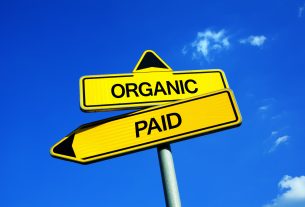Wondering how to be ranked in Google? It may feel like a daunting task, but believe it or not, it’s a straightforward process. When you’re ready to skyrocket your web traffic with a few simple tricks, read on.
1. How to be Ranked with On-Site SEO
Search engine optimization (SEO) is far and away the fastest method to improve your Google rankings. It only takes about 2 minutes per page once you practice. In only a few days, you’ll see your rankings rise.
Start by frontloading your keyword. Drop it at the beginning of your title tag. That’s the <H1> headline for those of you familiar with HTML.
Google places slightly more emphasis on words that show up early in your title tag. Ranking on Google in 2020 is better than getting ranked on any other search engine, so that’s what we’re after. Google owns over 92% of search engine market shares worldwide, after all.
2. Hit 2000 Words or More
Brian Dean, the ultimate SEO guru, recently said that you want at least an 1800 wordcount for each of your articles. It’s how to rank your website in 2020. The question is why?
Long story short, to rank on Google, you want to increase your user dwell time. It’s the time visitors stay on your webpage. The longer they stay, the higher the dwell time.
Google uses this as an indicator that your visitors are interested in what you have to offer. That, in turn, improves your Google ranking.
When you beef up your page with relevant, interesting content, it takes visitors longer to read. Right now, tests show that pages around 1800 words or more are the optimal range.
3. Include 2 to 3 Keywords on Your Page
Ranking on Google in 2020 can be simple if you place your keywords intelligently. Long gone are the days of keyword stuffing. In those days, you shoved as many keywords as you could on-page and your ranking rose accordingly.
AI’s and complex algorithms now make such practices obsolete. They’re detrimental to your cause. Instead, you want to sprinkle your keyword 2 or 3 times on your page. Make sure they’re not jammed together.
Some SEO experts recommend you throw one in the <H1> headline, one in a subhead <H2>, and one in the conclusion.
4. Include LSI Keywords
LSI keywords are keywords that are related to your main keywords.
For instance, suppose your keyword is “therapeutic massage.” Think about other words that might be related to that topic.
- Massage oil
- Massage lotion
- Deep tissue massage
- Massage table
- Sports injury
- Etc.
Each is related to the main keyword. Some may be more relevant to the purpose of your article. It’s best to use LSI keywords that rank high all by themselves.
5. Say it Above the Fold
Imagine, if you will, an old fashion newspaper. Anything above the fold on the first page is what readers immediately see when they pick it up. Well, the same holds for webpages.
Anything your visitors can see when your webpage first loads is considered “above the fold.” Make sure the information therein clearly states what the page is about. Also make certain it includes a headline that hooks your visitors, enticing them to read more.
The purpose of doing all this is to reduce your bounce rate. It’s the percentage of visitors who land on your site and immediately click away. It’s also one of the main factors that Google uses to calculate page ranking.
What’s Next?
Well, if you want to know how to be ranked in 2020, you now have 5 simple steps. They’re all straightforward except for “creating an enticing headline.” Even that just takes practice.
If you’d like to learn the power of search engines, pop over to our huge library of articles. So long and good luck!



